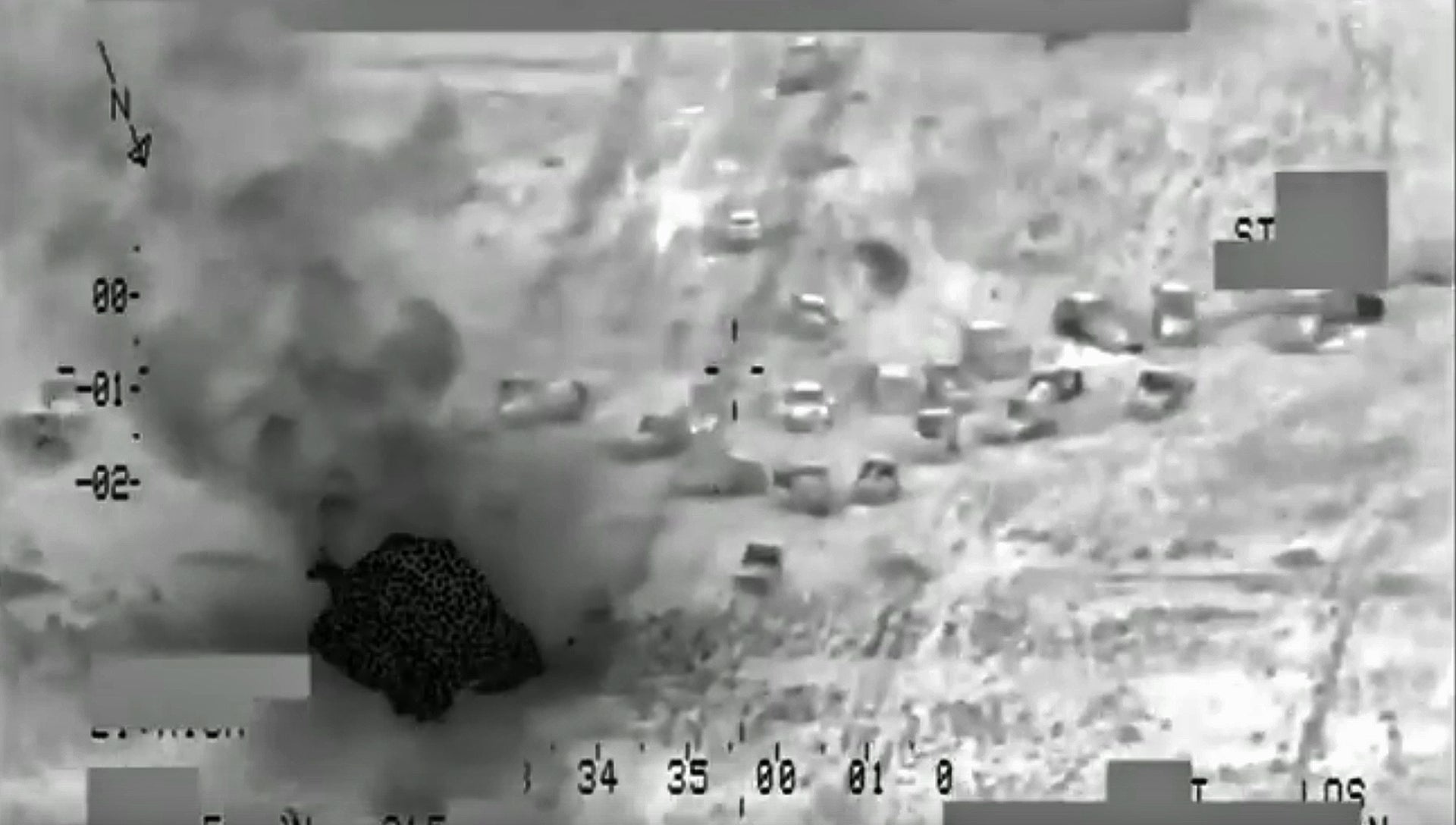Days after Iraqi forces, backed by US airpower, swept ISIS from war-torn Fallujah, a convoy of ISIS vehicles traveling west on a desert highway leading toward the Iraqi-Syrian border was identified and tracked by a US surveillance aircraft east of Ramadi. US and Iraqi aerial attack assets swooped in on the convoy, laying waste to an estimated 200 vehicles loaded with supplies, and killing an estimated 250 fighters in the process. The event is reminiscent of the Highway of Death incident that occurred at the tail end of Operation Desert Storm, albeit on a smaller scale.
The convoy was probably escaping Iraqi forces and repositioning to support ISIS fighters under attack in the Iraq-Syria border town of Abu Kamal. The far western Syrian city is a major artery for ISIS fighters and material, and has been recently under assault by US-backed and trained Syrian troops. A small airbase outside of the city was briefly seized by these forces, dubbed the New Syrian Army, last week, but then an ISIS counter-assault took it back. A large stockpile of munitions were looted in the process.
Another convoy of around 55 vehicles tried to escape from one of Fallujah’s western suburbs but was also pummeled by airpower. Although Iraq said Fallujah has once again been liberated from extremist control, there are massive population displacements due to the fighting, and aid is in short supply. The questionable security situation has only made getting aid to those in need that much more perilous.
What makes the airstrikes on the convoys odd is that ISIS fighters had adapted to US airpower early in the coalition bombing campaign, and don’t usually travel in dense convoys like the ones attacked yesterday.

Clearly, pressure has increased on ISIS as airstrikes have ramped up to an unprecedented degree and with the Iraqi Army recently kicking ISIS out of Ramadi and Fallujah, and with Iranian-backed Shiite militias evicting Islamic State fighters from Tikrit months ago. There is also pressure being put on ISIS in Syria. From the west, Assad’s forces, backed by Russia, are marching east toward ISIS’s de facto capital of Raqqa, while Syrian Democratic Forces, mainly made up of Kurdish Worker’s Party affiliated fighters, are arrayed to the north of the city.
Still, kicking ISIS out of places like Fallujah or Palmyra is a far cry from executing a similar operation in Mosul or Raqqa. By all accounts, anti-ISIS forces of any type are many months—and more likely years—away from doing so, and the resulting battles could be some of the bloodiest in modern history.
Meanwhile, ISIS’s reach is expanding in other places, including online with its so-called virtual caliphate, and its ideology is becoming more ingrained across the world. The terrible proof of which we’ve seen in terrorist attacks both at home and abroad.
Contact the author Tyler@thedrive.com
UPDATE: The USAF has released some incredible footage of the opening shots of this attack and disclosed that F-15Es, A-10s, B-52s and MQ-1s were all involved with the onslaught. You can see the “bookend” strikes at the front and rear of the convoy to trap it, then it looks like possibly a Wind Corrected Munitions Dispenser (WCMD) with a CBU-87 cluster munition or the A-10’s cannon was used to pulverize the central part of the convoy.
